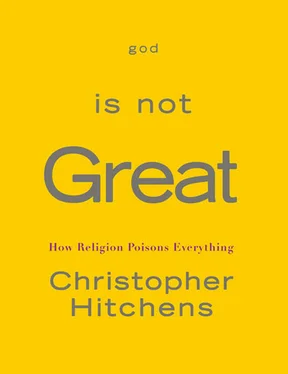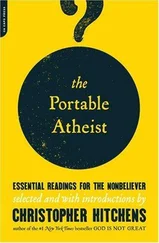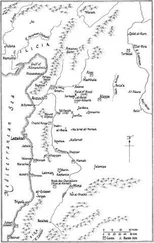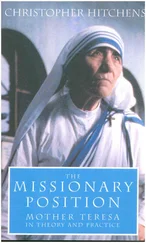The question is in some ways ultimately undecidable. I would prefer to have Evelyn Waugh’s shelf of writing just as it is, and to appreciate that one cannot have the novels without the torments and evils of its author. And if all Muslims conducted themselves like the man who gave up more than a week’s salary in order to do the right thing, I could be quite indifferent to the weird exhortations of the Koran. If I search my own life for instances of good or fine behavior I am not overwhelmed by an excess of choice. I did once, shivering with fear, take off my flak jacket in Sarajevo and lend it to an even more frightened woman who I was helping escort to a place of safety (I am not the only one who has been an atheist in a foxhole). I felt at the time that it was the least I could do for her, as well as the most. The people shelling and sniping were Serbian Christians, but then, so was she.
In northern Uganda in late 2005, I sat in a center for the rehabilitation of kidnapped and enslaved children in the land of the Acholi people who live on the northern side of the Nile. The listless, vacant, hardened little boys (and some girls) were all around me. Their stories were distressingly similar. They had been seized, at the age of anything from eight to thirteen, from their schools or homes by a stone-faced militia that was itself originally made up of abducted children. Marched into the bush, they were “initiated” into the force by one (or two) of two methods. They either had to take part in a murder themselves, in order to feel “dirtied up” and implicated, or they had to submit to a prolonged and savage whipping, often of up to three hundred strokes. (“Children who have felt cruelty,” said one of the elders of the Acholi people, “know very well how to inflict it.”) The misery inflicted by this army of wretches turned zombies was almost beyond computation. It had razed villages, created a vast refugee population, committed hideous crimes such as mutilation and disemboweling, and (in a special touch of evil) had continued to kidnap children so that the Acholi were wary of taking strong countermeasures lest they kill or injure one of their “own.”
The name of the militia was the “Lord’s Resistance Army” (LRA), and it was led by a man named Joseph Kony, a passionate former altar boy who wanted to subject the area to the rule of the Ten Commandments. He baptized by oil and water, held fierce ceremonies of punishment and purification, and insured his followers against death. His was a fanatical preachment of Christianity. As it happened, the rehabilitation center in which I was sitting was also run by a fundamentalist Christian organization. Having been out into the bush and seen the work of the LRA, I fell to talking with the man who tried to repair the damage. How did he know, I asked him, which of them was the truest believer? Any secular or state-run outfit could be doing what he was doing—fitting prosthetic limbs and providing shelter and “counseling”—but in order to be Joseph Kony one had to have real faith.
To my surprise, he did not dismiss my question. It was true, he said, that Kony’s authority arose in part from his background in a priestly Christian family. It was also true that people were apt to believe he could work miracles, by appealing to the spirit world and promising his acolytes that they were death-proof. Even some of those who had run away would still swear that they had seen wonders performed by the man. All that a missionary could do was to try and show people a different face of Christianity.
I was impressed by this man’s frankness. There were some other defenses that he might have offered. Joseph Kony is obviously far away from the Christian “mainstream.” For one thing, his paymasters and armorers are the cynical Muslims of the Sudanese regime, who use him to make trouble for the government of Uganda, which has in turn supported rebel groups in Sudan. In an apparent reward for this support, Kony at one stage began denouncing the keeping and eating of pigs, which, unless he has become a fundamentalist Jew in his old age, suggests a payoff to his bosses. These Sudanese murderers, in their turn, have for years been conducting a war of extermination not just against the Christians and animists of southern Sudan, but against the non-Arab Muslims of Darfur province. Islam may officially make no distinction between races and nations, but the slaughterers in Darfur are Arab Muslims and their victims are African Muslims. The “Lord’s Resistance Army” is nothing but a Christian Khmer Rouge sideshow in this more general horror.
An even more graphic example is afforded by the case of Rwanda, which in 1992 gave the world a new synonym for genocide and sadism. This former Belgian possession is the most Christian country in Africa, boasting the highest percentage of churches per head of population, with 65 percent of Rwandans professing Roman Catholicism and another 15 percent adhering to various Protestant sects. The words “per head” took on a macabre ring in 1992, when at a given signal the racist militias of “Hutu Power,” incited by state and church, fell upon their Tutsi neighbors and slaughtered them en masse .
This was no atavistic spasm of bloodletting but a coldly rehearsed African version of the Final Solution, which had been in preparation for some time. The early warning of it came in 1987 when a Catholic visionary with the deceptively folksy name of Little Pebbles began to boast of hearing voices and seeing visions, these deriving from the Virgin Mary. The said voices and visions were distressingly bloody, predicting massacre and apocalypse but also—as if in compensation—the return of Jesus Christ on Easter Sunday, 1992. Apparitions of Mary on a hilltop named Kibeho were investigated by the Catholic Church and announced to be reliable. The wife of the Rwandan president, Agathe Habyarimana, was specially entranced by these visions and maintained a close relationship with the bishop of Kigali, Rwanda’s capital city. This man, Monsignor Vincent Nsengiyumva, was also a central-committee member of President Habyarimana’s single ruling party, the National Revolutionary Movement for Development, or NRMD. This party, together with other organs of state, was fond of rounding up any women of whom it disapproved as “prostitutes” and of encouraging Catholic activists to trash any stores that sold contraceptives. Over time, the word spread that prophecy would be fulfilled and that the “cockroaches”—the Tutsi minority—would soon get what was coming to them.
When the apocalyptic year of 1994 actually hit, and the premeditated and coordinated massacres began, many frightened Tutsi and dissident Hutu were unwise enough to try and take refuge in churches. This made life considerably easier for the interahamwe , or government and military death squads, who knew where to find them and who could rely on priests and nuns to point out the locations. (This is why so many of the mass-grave sites that have been photographed are on consecrated ground, and it is also why several clergymen and nuns are in the dock at the ongoing Rwandan genocide trials.) The notorious Father Wenceslas Munyeshyaka, for example, a leading figure at the Kigali Cathedral of Saint Famille, was smuggled out of the country with the assistance of French priests, but he has since been charged with genocide, with providing lists of civilians to the interahamwe , and with the rape of young refugee women. He is by no means the only cleric to have faced similar charges. Lest it be thought that he was merely a “rogue” priest, we have the word of another member of the Rwandan hierarchy, the bishop of Gikongoro, otherwise known as Monsignor Augustin Misago. To quote one careful account of these atrocious events:
Bishop Misago was often described as a Hutu Power sympathizer; he had been publicly accused of barring Tutsis from places of refuge, criticizing fellow members of the clergy who helped “cockroaches,” and asking a Vatican emissary who visited Rwanda in June 1994 to tell the Pope “to find a place for Tutsi priests because the Rwandan people do not want them anymore.” What’s more, on May 4 of that year, shortly before the last Marian apparition at Kibeho, the bishop appeared there himself with a team of policemen and told a group of ninety Tutsi schoolchildren, who were being held in preparation for slaughter, not to worry, because the police would protect them. Three days later, the police helped to massacre eighty-two of the children.
Читать дальше












